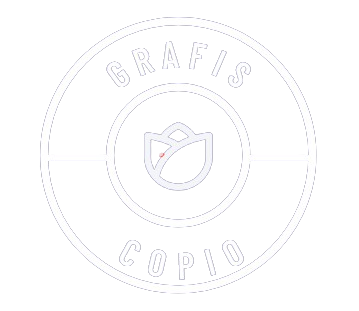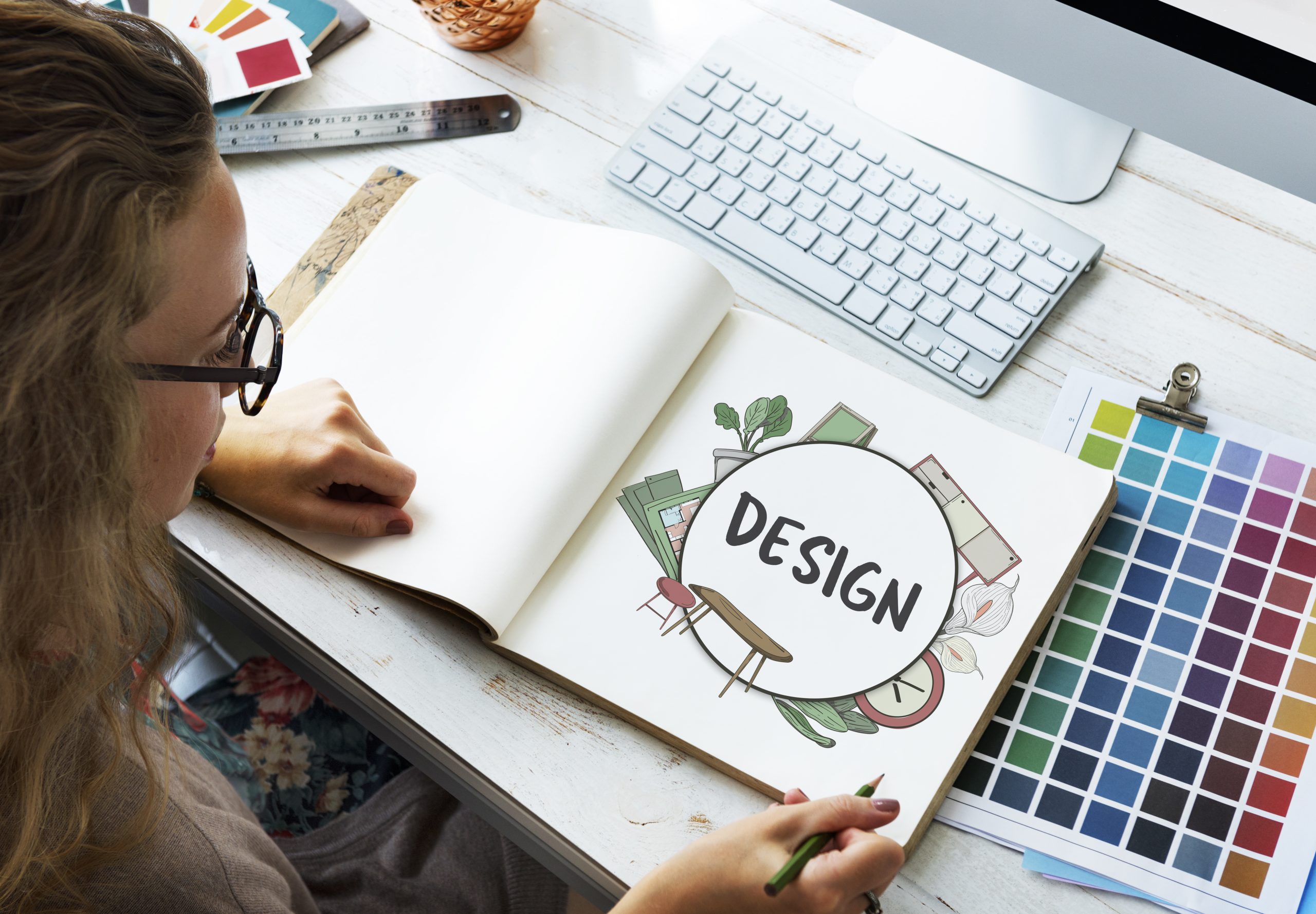Have you ever wondered what a graphic designer actually does? In this article, we’ll show you a slew of examples that illustrate their daily tasks and responsibilities. From crafting captivating marketing materials to designing user-friendly websites, graphic designers wield their creativity to effectively convey messages through visual content. They excel at developing brand identities, designing ads, and retouching photos. Inside the realm of graphic design, there are specialized fields including website, logo, and illustration design. So, if you’re intrigued by the behind-the-scenes work of graphic designers and want to delve deeper into their craft, keep reading to explore the fascinating world of graphic design.
Logo Design and Branding
One of the key tasks a graphic designer does is creating unique and memorable logos that effectively represent a brand. Logo design is an integral part of the branding process, as it helps establish a visual identity for a company or organization. A well-designed logo can communicate the values and personality of a brand, making it instantly recognizable and memorable to consumers.
The logo design process involves understanding the client’s goals and target audience, researching the industry and competitors, and brainstorming ideas. The designer then creates multiple concepts, experimenting with different colors, fonts, and graphic elements. Through iteration and feedback, the final logo is refined and perfected.
Creating a memorable logo requires a combination of creativity, technical skills, and an understanding of design principles. It is important to consider factors such as simplicity, versatility, and scalability, as logos are often used across various platforms and mediums.
Logo design trends are constantly evolving, influenced by current design aesthetics and cultural shifts. Some current trends include minimalist and geometric designs, vintage and retro-inspired logos, and hand-drawn or custom lettering. Staying up-to-date with these trends can help graphic designers create logos that are modern and visually appealing.
Advertising and Marketing Materials
To effectively promote a brand or product, a graphic designer creates visually compelling advertising and marketing materials. These materials play a crucial role in capturing the attention of the target audience and conveying the desired message. Here are three key ways in which graphic designers contribute to successful advertising and marketing campaigns:
- Designing eye-catching visuals: Graphic designers use their creative skills to design visually appealing and attention-grabbing promotional materials. They incorporate graphic design trends and techniques to create designs that stand out and resonate with the audience.
- Creating marketing collateral: Graphic designers develop marketing collateral such as brochures, flyers, and posters that effectively communicate the brand’s message. They use visual storytelling techniques to engage the audience and convey information in a memorable way.
- Enhancing brand identity: Graphic designers play a crucial role in developing and maintaining a brand’s visual identity. They create designs that align with the brand’s values and aesthetics, ensuring consistency across all marketing materials.
Website and User Interface Design
As a graphic designer, you play a key role in creating engaging and intuitive web pages, including the design of user interfaces. Your expertise in web page layout, interactive design, UX/UI design, wireframing, and responsive design will greatly impact the user experience and overall success of a website.
In web design, the user interface (UI) is the visual and interactive elements that users interact with on a website. It includes buttons, menus, forms, and other components that allow users to navigate and interact with the site. The user experience (UX) focuses on creating a seamless and enjoyable experience for users, taking into consideration their needs, goals, and preferences.
To create effective web pages, you will often start with wireframing, which is the process of sketching out the basic structure and layout of a web page. This helps you plan the placement of content, images, and interactive elements before diving into the visual design.
Responsive design is another crucial aspect of web and UI design. It ensures that the website is accessible and displays properly across different devices and screen sizes. This is achieved by using flexible layouts, fluid images, and media queries to adapt the design to different screen resolutions.
To illustrate the importance of website and user interface design, consider the following table:
| Web Page Design | Interactive Design | UX/UI Design | Wireframing | Responsive Design |
|---|---|---|---|---|
| Determines the visual layout and structure of a web page | Incorporates interactive elements to engage users | Focuses on creating a seamless and enjoyable user experience | Sketches out the basic structure and placement of content | Ensures the website is accessible and displays properly on different devices |
Publication and Editorial Design
When working on publication and editorial design projects, you will be responsible for designing layouts and visual elements for printed materials such as magazines, newspapers, books, and newsletters. To create compelling publication layouts, it is essential to stay up to date with the latest editorial design trends. Incorporating these trends can help your designs stand out and attract readers. When designing magazine covers, consider using bold and eye-catching visuals that capture the essence of the publication’s content. For book design principles, focus on creating a cohesive and visually appealing layout that complements the book’s theme and genre. Pay attention to typography, spacing, and imagery to enhance the reader’s experience. When it comes to newspaper layout techniques, aim for a clean and organized design that allows for easy navigation and readability. Utilize grid systems and strategic placement of headlines, images, and text to create a visually appealing and informative newspaper layout. By applying these principles and techniques, you can create visually stunning and engaging designs for various publications.
Packaging Design
Design packaging that effectively showcases and protects the product. Packaging design plays a crucial role in product differentiation, attracting consumers, and creating a strong brand identity. It is an opportunity to make your product stand out on the shelves and leave a lasting impression. Typography also plays a significant role in brand identity, as it contributes to the overall visual aesthetic and communicates the brand’s personality. Choosing the right fonts can evoke emotions and create a sense of familiarity and recognition.
To engage consumers further, consider incorporating motion graphics into your packaging design. Motion graphics can add an element of interactivity and captivate the audience’s attention. Exploring the world of digital art and illustration can also enhance your packaging design. By utilizing digital tools and techniques, you can create unique and visually appealing designs that resonate with your target audience.
In addition to aesthetics, effective data visualizations can also play a role in packaging design. By presenting information in a visually engaging and easily digestible format, you can communicate the product’s features and benefits more effectively. Consider incorporating charts, graphs, or infographics to showcase data in a visually appealing way.
Overall, packaging design is a powerful tool for creating a strong brand identity, attracting consumers, and differentiating your product from competitors. By incorporating typography, motion graphics, digital art, and effective data visualizations, you can create packaging that effectively showcases and protects your product while leaving a lasting impression on consumers.
| Keywords |
|---|
| Product differentiation through packaging design |
| The role of typography in brand identity |
| Creating engaging motion graphics |
| Exploring the world of digital art and illustration |
| Designing effective data visualizations |
Typeface and Font Design
To effectively convey a brand’s personality and create a visually appealing aesthetic, graphic designers utilize their expertise in typeface and font design. Typeface and font design play a crucial role in the overall design composition and can greatly impact the message and perception of a brand. Here are three key aspects of typeface and font design that graphic designers consider:
- Typeface History: Understanding the history of typefaces helps designers appreciate the development and evolution of different styles. From traditional serif fonts to modern sans serifs, designers draw inspiration from the past to create contemporary designs.
- Font Selection: Choosing the right font is essential in conveying the desired tone and message. Designers consider factors such as legibility, readability, and appropriateness for the brand. They also stay updated with typography trends to create designs that feel fresh and relevant.
- Serif vs Sans Serif and Font Pairing: Graphic designers carefully consider whether to use serif or sans serif fonts, as each has its own characteristics and conveys a different mood. They also experiment with font pairing, combining different fonts to create contrast and visual interest.
Motion Graphics and Animation
Explore the dynamic world of motion graphics and animation in graphic design. Motion graphics is the art of bringing graphics to life through movement, while animation techniques involve creating the illusion of motion through a series of images. These elements are used to enhance visual storytelling and engage viewers in a captivating way.
Motion graphics can be seen in various forms, such as video intros, explainer videos, and social media content. Animation techniques bring characters, objects, and ideas to life, creating a sense of depth and immersion. Visual storytelling is enhanced by the use of motion graphics and animation, allowing designers to convey complex messages in a concise and engaging manner.
Kinetic typography is another aspect of motion graphics that involves animating text to create dynamic and visually appealing designs. Video editing plays a crucial role in motion graphics and animation, as it allows designers to combine various elements and create seamless transitions.
Incorporating motion graphics and animation techniques into graphic design adds a new dimension to the creative process. It allows designers to explore innovative ways of communicating ideas and capturing the attention of audiences. So, whether it’s using kinetic typography to emphasize key points or incorporating animation to bring illustrations to life, motion graphics and animation are powerful tools in the world of graphic design.
Illustration and Digital Art
Illustration and digital art play a pivotal role in graphic design, allowing you to bring your creative ideas to life through visually captivating and digitally rendered images. With digital illustration, you can create stunning visuals using software like Adobe Illustrator, unleashing your imagination and transforming ideas into reality. Vector graphics, such as those created through digital illustration, allow for scalability and flexibility, making them ideal for creating logos and icons that can be resized without losing quality. Character design is another aspect of illustration and digital art, enabling you to bring unique and memorable characters to life, whether it’s for a children’s book, a video game, or an animated film. Digital painting is another technique that falls under this subtopic, allowing you to create realistic or stylized artwork using digital tools and techniques. Finally, art direction is essential in guiding the overall aesthetic and visual direction of a project, ensuring that all elements work together harmoniously. In summary, illustration and digital art are powerful tools that enable graphic designers to create visually stunning and engaging designs, incorporating elements like digital illustration, vector graphics, character design, digital painting, and art direction.
Infographic and Data Visualization Design
Infographic and data visualization design is a crucial aspect of graphic design, allowing you to present complex information in a visually appealing and easily understandable format. Infographics are a popular way to convey information because they combine images, text, and data into a cohesive and engaging visual. Data visualization techniques help you transform raw data into meaningful insights and stories. By using charts, graphs, and diagrams, you can make data more accessible and digestible for your audience.
In the world of graphic design, infographic design and data visualization play a significant role in various areas. For instance, in the logo design process, infographics can be used to showcase different logo concepts and explain the reasoning behind each design choice. In branding strategies, infographics can visually represent the brand’s values, personality, and key messages. Graphic design in advertising campaigns often involves creating infographics to communicate product features, benefits, and statistics.
To give you a better understanding of the importance of infographic and data visualization design, here is a table highlighting some key aspects:
| Key Aspects | Importance |
|---|---|
| Infographic Design | Presents complex information in a visually appealing format |
| Data Visualization Techniques | Transforms raw data into meaningful insights and stories |
| Logo Design Process | Utilizes infographics to showcase logo concepts and explain design choices |
| Branding Strategies | Visually represents brand values, personality, and key messages |
| Graphic Design in Advertising Campaigns | Communicates product features, benefits, and statistics |
Social Media Graphics and Content Creation
To effectively engage your audience on social media, graphic design plays a crucial role in creating visually appealing and captivating graphics and content. Here are three key aspects to consider when it comes to social media graphics and content creation:
- Social Media Strategy: A well-defined social media strategy is essential for creating effective graphics and content. Understand your target audience, research popular trends, and align your design choices with your brand’s identity and goals.
- Content Creation Tips: When creating graphics for social media, keep in mind the platform’s requirements and limitations. Use high-quality images, eye-catching colors, and clear typography. Incorporate your brand elements consistently to maintain recognition. Experiment with different formats, such as videos, infographics, or carousel posts, to keep your content fresh and engaging.
- Optimizing Graphics: Optimize your graphics for social media by ensuring they load quickly and display correctly on different devices. Use compressed file formats and appropriate dimensions for each platform. Test your graphics across various devices and screen sizes to ensure they look great everywhere.



